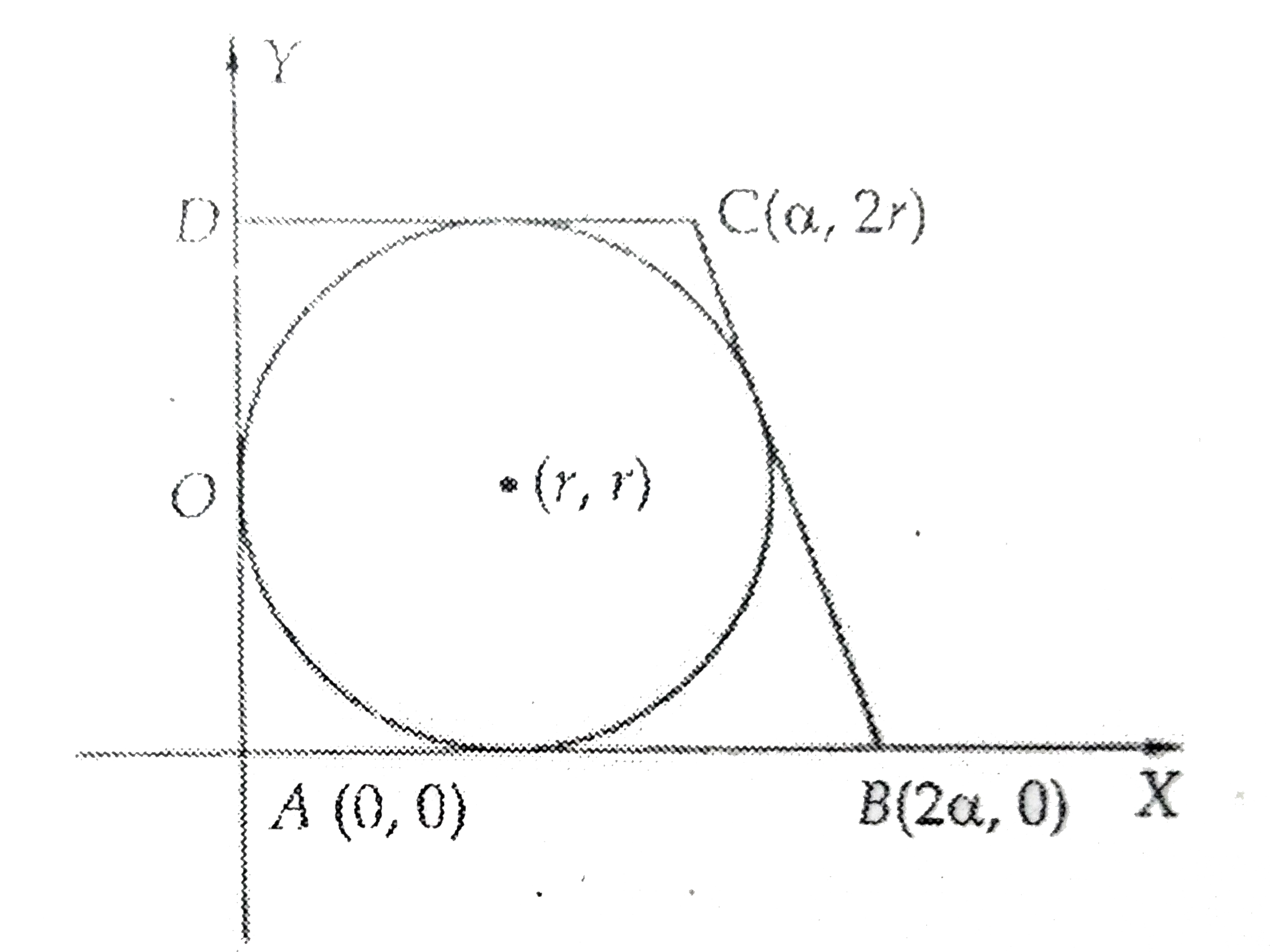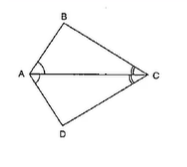Let ABCD be a quadrilateral with are 18 , side AB parallel to the side CD,andAB=2CD . Let AD be perpendicular to ABandCD . If a circle is drawn inside the quadrilateral ABCD touching all the sides, then its radius is 3 (b) 2 (c) 32 (d) 1
3
2
3/2
1
The correct Answer is:B
Let CD=α. Then, AB=2α.
The equation of BC is
y=−2rα(x−2α)or,2rx+αy−4rα=0

It touches the circle (x−1)2+(y−r)2=r2
∴∣∣∣2x2+αr−4αr√4r2+α2∣∣∣=r
⇒(2r2−3αr)2=r2(α2+4r2)
⇒(2r−3α)2=(α2+4r2)⇒−12rα+9α2=α2⇒α=3r2
Now, Area of quadrilateral ABCD = 18
⇒12(AB+CD)x2r=18
⇒3αr=18
⇒αr=6⇒3r2=12[∴α=3r2]
⇒r=2
Topper's Solved these Questions
- BOOK - OBJECTIVE RD SHARMACHAPTER - CIRCLESEXERCISE - Section-I (Solved MCQs)1videos
CIRCLES
- BOOK - OBJECTIVE RD SHARMACHAPTER - CIRCLESEXERCISE - Section II - Assertion Reason Type12videos
CIRCLES
- BOOK - OBJECTIVE RD SHARMACHAPTER - CIRCLESEXERCISE - Chapter Test55videos
CIRCLES
- BOOK - OBJECTIVE RD SHARMACHAPTER - CARTESIAN PRODUCT OF SETS AND RELATIONS EXERCISE - Chapter Test31videos
CARTESIAN PRODUCT OF SETS AND RELATIONS
- BOOK - OBJECTIVE RD SHARMACHAPTER - COMPLEX NUMBERS EXERCISE - Chapter Test59videos
COMPLEX NUMBERS
Similar Questions
Let ABCD be perpendicular to ABandCD. If a circle is drawn inside the quadrilateral ABCD touching all the sides, then its radius is : (a) 3 (b) 2 (c) 32(d) 1
View SolutionLet ABCD be a quadrilateral with area 18 , side AB parallel to the side CD,andAB=2CD . Let AD be perpendicular to ABandCD . If a circle is drawn inside the quadrilateral ABCD touching all the sides, then its radius is 3 (b) 2 (c) 32 (d) 1
View SolutionABCD is a cyclic quadrilateral. ABandDC are produced to meet in E. Prove that EBC−EDA.
View SolutionIn an equilateral triangle ABC if AD⊥BC, then AD2 = (a)CD2 (b) 2CD2 (c) 3CD2 (d) 4CD2
View SolutionABCD is a cyclic quadrilateral whose diagonals ACandBD intersect at P . If AB=DC, Prove that : PAB≅PDC PA=PDandPC=PB ADBC
View Solution(c) 103 (d) 10 18. A circle is inscribed in an equilateral triangle with side lengths 6 unit. Another circle is drawn inside the triangle (but outside the first circle), tangent to the first circle and two of the sides of the triangle. The radius of the smaller circle is (b) 2/3 (a) 1/ 3 (c) 2 (d) 1
View SolutionABCD is a quadrilateral such that ∠D=900. A circle C(O,r) touches the sides AB,BC,CDandDA at P,Q,RandS respectively. If BC=38cm,CD=25cmandBP=27cm, find r.
View SolutionIn a quadrilateral ABCD , given that ∠A+∠D=90o . Prove that AC2+BD2=AD2+BC2 .
View SolutionIn Figure, diagonal AC of a quadrilateral ABCD bisects the angles A and C . Prove that AB=AD and CB=CD
 View Solution
View SolutionLet ABCD be a tetrahedron such that the edges AB,ACandAD are mutually perpendicular. Let the area of triangles ABC,ACDandADB be 3, 4 and 5sq. units, respectively. Then the area of triangle BCD is 5√2 b. 5 c. √52 d. 52
View Solution

